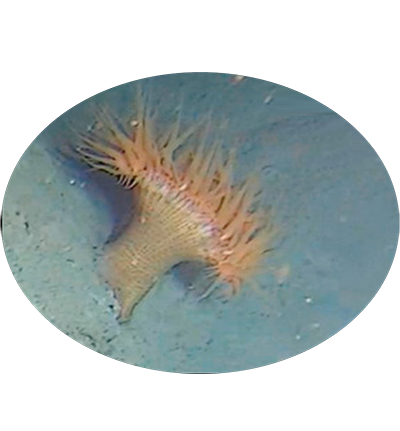
Deep-sea anemone species Paraphelliactis xishaensis sp. nov. is a newly described species of deep-sea anemone in the genus Paraphelliactis, discovered in the Xisha Trough of the South China Sea at a depth of 3,230 meters. This species is adapted to the extreme conditions of the deep sea, thriving in cold, dark, and high-pressure environments. Its discovery contributes to our understanding of the biodiversity and ecological dynamics of deep-sea ecosystems.
Animalia (Kingdom); Cnidaria (Phylum); Anthozoa (Subphylum); Hexacorallia (Class); Actiniaria (Order); Enthemonae (Suborder); Metridioidea (Superfamily); Hormathiidae (Family); Paraphelliactis (Genus); Paraphelliactis xishaensis (Species)
Paraphelliactis xishaensis Feng, Liu, Xu, Zhou, Zhu, Liu, Wu, Li, Qiu, He, Wang, Zhang & Wang, 2021
Morphologically, this deep-sea anemone has an orange-brown body and markedly expanded oral disc. The column is divisible into scapus and scapulus and regularly covered with dense tubercles. No cinclides. Internal column bears acontia. These lines of characteristics suggest this anemone should belong to the genus Paraphelliactis (Actiniaria, Hormathiidae), which is also established by molecular evidence
Xisha Trough (113.737502° E, 18.266465° N)
| Species | Phylum | Common Name | Ecosystem | Depth | Habitat | NCBI Taxonomy ID |
|---|---|---|---|---|---|---|
| Paraphelliactis xishaensis sp. nov. | Cnidaria | Paraphelliactis xishaensis | Deep sea | 3,230 | Xisha Trough (113.737502° E, 18.266465° N) | 2836328 |
| Genome Assembly | Genome Size | Assembly level | Released year | WGS accession | Submitter | BioProject | BUSCO completeness (%) | Scaffold/Contig N50 (kb) | GC content (%) | Repeat Rate (%) | Gene Number |
|---|---|---|---|---|---|---|---|---|---|---|---|
| - | 542.9Mb | Contig | 2021 | - | Northwestern Polytechnical University | PRJNA588374 | 89.50 | 761.1 | 37.5 | 56.6 | 32,549 |
| Title | Journal | Pubmed ID |
|---|---|---|
| The genome of a new anemone species (Actiniaria: Hormathiidae) provides insights into deep-sea adaptation | Deep Sea Research Part I | Link |

